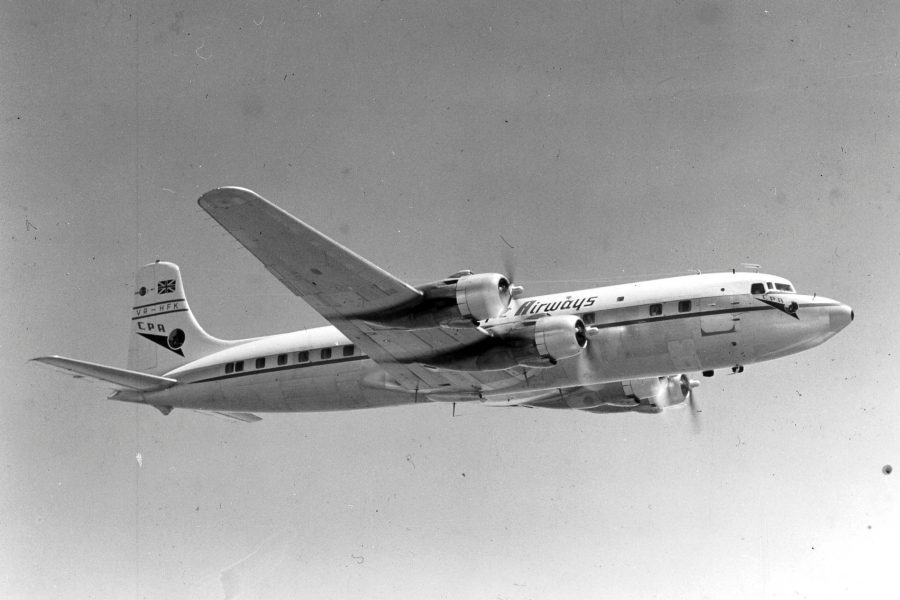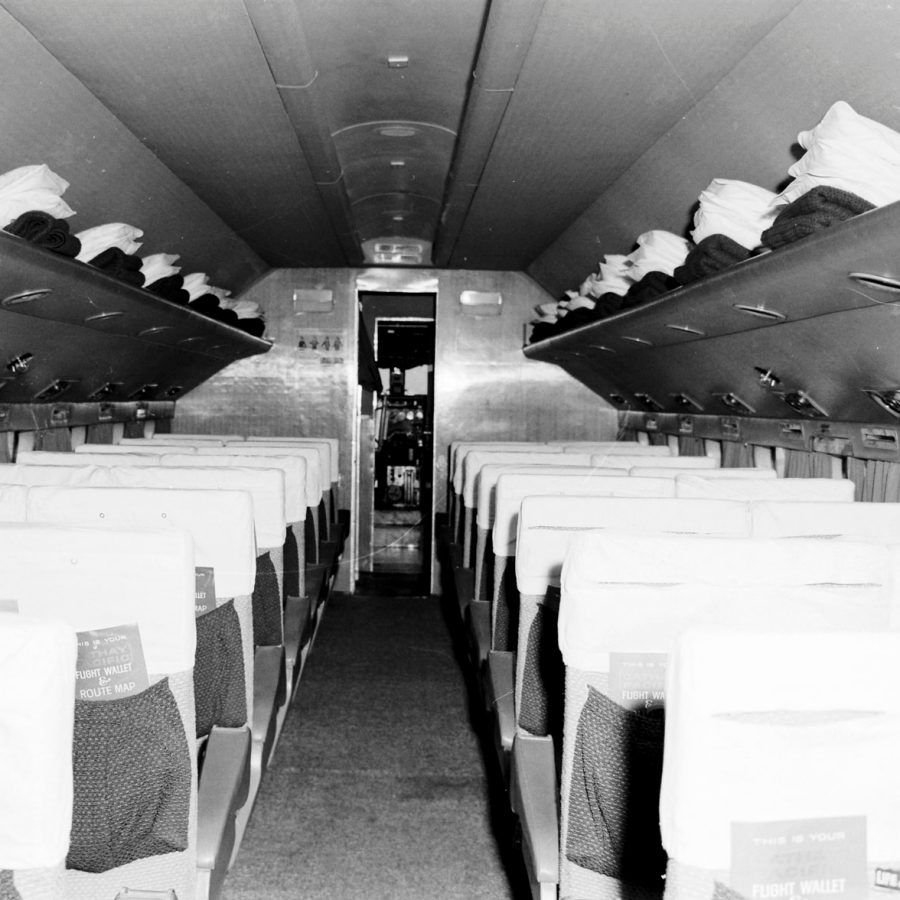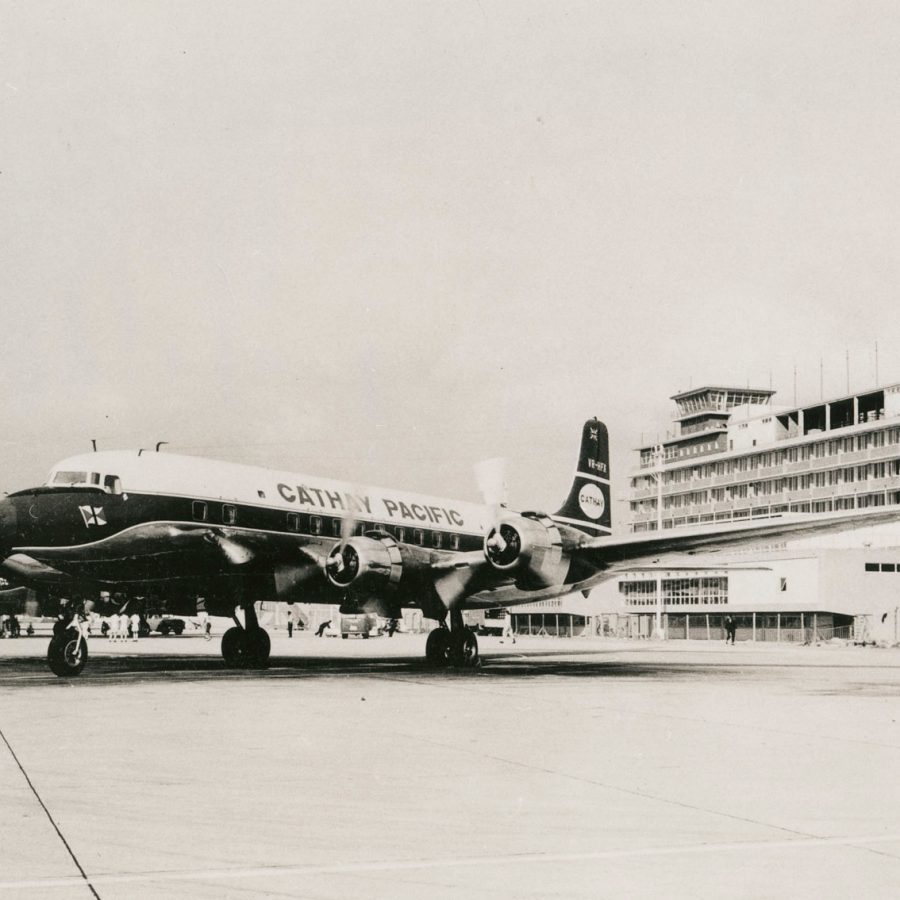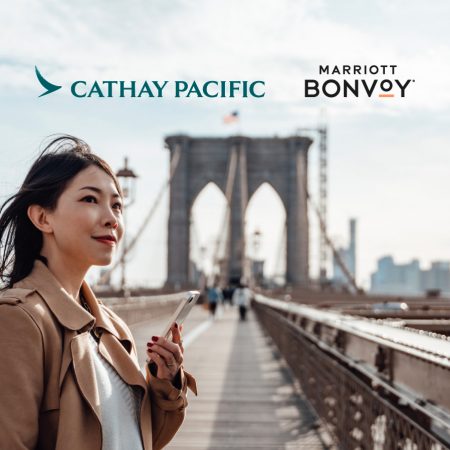60 years ago Cathay Pacific's first DC-6B

Four splutters, clouds of blue smoke and the recognisable roar of vintage aircraft engines cut through the still air of a frozen wilderness.
Astonishingly, 60 years on from its purchase, Cathay Pacific’s very first DC-6B continues to fly today – ferrying cargo around Alaska for Everts Air Cargo. They built them tough in those days. The plane’s ruggedness makes it ideal for the temporary and gravel runways dotted around the vast northern American state. But it was also the ideal aircraft to negotiate a very different environment in the 1950s.
Cathay Pacific Airways was 10 years old and under mounting pressure to start making money for its owner, Swire. Its directors decided to increase their investment – and gain some face in the Asian market – by upgrading its small fleet of propeller-powered twin engine DC-3s and four engine DC-4s. Chairman Jock Swire went about raising the necessary capital for the bigger, newer DC-6.

Like the existing DC-4s, the DC-6 had four piston engines. Unlike them, it had a pressurised cabin. The aircraft thus brought the fleet closer to the modern age and enabled it to climb above some of the region’s bumpy weather.
The aircraft was well received in the local market, with the press describing the plane as ‘sleek’, and the ride as ‘extremely smooth’. It put in a sterling service on the Hong Kong to Singapore route, leaving its home base at dusk and arriving at midnight before flying back.
Passengers enjoyed the reduced journey times and sleeping berths on the ‘Midnight Special’. But according to Gavin Young’s portrait of the airline, Beyond Lion Rock, pilots renamed it the ‘Midnight Horror’ due to the lack of navigation aids and the frequent thunderstorms that needed to be dodged.

The journey became less horrific in 1958 with the purchase of the airline’s first DC-6B. It went on to pioneer the route to Taipei, which was to later become one of the airline’s most lucrative.
The DC-6B was a game-changer. It was the first aircraft that Cathay Pacific bought new from the manufacturer – it cost HK$6,736,860 – while for those sitting in the cockpit, it came equipped with radar, also a novelty for the fleet at this time. It sent out another signal, too: that Cathay Pacific was about to join the top table of global airlines.
- China – the Chinese Mainland, Hong Kong SAR, Macao SAR and Taiwan Region
- Hong Kong SAR - English
- Chinese Mainland (China) - English
- Taiwan, China - English
- 香港特別行政區 - 繁體中文
- 中国內地 - 简体中文
- 中國台灣 - 繁體中文
- Africa
- South Africa - English
- Asia
- Bangladesh - English
- Korea - English
- Singapore - English
- Cambodia - English
- 한국 - 한국어
- Sri Lanka - English
- India - English
- Malaysia - English
- Thailand - English
- Indonesia - English
- Maldives - English
- ประเทศไทย - ภาษาไทย
- Indonesia - Bahasa Indonesia
- Myanmar - English
- Vietnam - English
- Japan - English
- Nepal - English
- Việt Nam - tiếng Việt
- 日本 - 日本語
- Philippines - English
- Australasia
- Australia - English
- New Zealand - English








